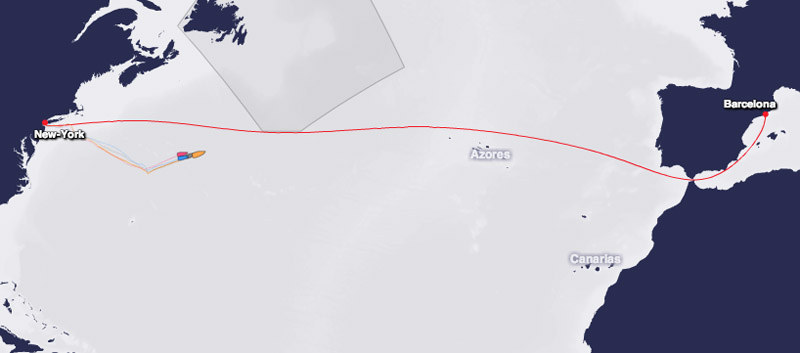
Solo Sailor’s Death a Mystery
Sacramento-based singlehander Andrew Henry Ewing, 31, was found dead on Angel Island yesterday, ending an extensive, multi-agency search. According to US Coast Guard sources, he had departed Alameda’s Grand Marina aboard his Cal 2-29 sloop Alma shortly after 6 p.m. Sunday.

We may never know exactly what transpired between then and 4:15 the next morning — 10 hours — when he activated the sloop’s EPIRB and a personal tracking device. The unmanned hull was soon discovered partially submerged on the rocks near Yellow Bluff, northeast of the Golden Gate Bridge. Ewing’s body was spotted early Tuesday morning on the southwest portion of Angel Island by a Coast Guard helicopter crew — roughly three miles from where the hull was found.
The Marin County Sheriff’s office intends to do a forensic exam in an attempt to determine the cause of death as well as the circumstances surrounding it. Ewing was reportedly setting off across the Pacific alone, with the goal of eventually reaching the Philippines.
The Sextant Killer Turns 25
On June 2, MiTAC Digital Corporation of Santa Clara, makers of Magellan GPS units, celebrated the 25th anniversary of the NAV 1000, the first commercially available handheld GPS. Powered by six AA alkaline batteries, the 8.75 x 3.5 x 2.25 inch device would come up with a very accurate latitude and longitude in about four minutes. Unlike sextants, the handheld GPS wasn’t rendered useless by fog. The NAV 1000, celebrated as one of the 100 "most influential" or "world changing" gadgets by the likes of Time magazine and Popular Mechanics, is now on display at the Smithsonian’s National Air and Space Museum.

Fill Your Tanks Before Heading to Avalon
Most of us know that mainland California is suffering from a serious drought. Then there is Avalon, "26 miles across the sea," where the situation is even worse. Southern California Edison recently told the city council that this is the driest year on the island in the last 123. Making the water shortage more acute is the fact that tourism has been going up steadily for the last four years, population has doubled since the 1970s, and there’s a mini building boom in the two-square-mile community.
Catalina gets 850,000 visitors per year, including 8,000 per day in the summer. Eighty percent of the 250,000 gallons of water used per day comes from the Edison desal plant.
New York-to-Barcelona Race Update

Three days into the IMOCA Ocean Masters’ inaugural New York-Barcelona race, the fleet is now hurtling toward Spain on the front of a stalled depression after a slow start that saw them crawl away from the coast in light air. For the four doublehanded teams competing on IMOCA 60s, the race has seen the full range of conditions, testing both crews’ tactical prowess and boat handling skills. American Ryan Breymaier and Spaniard Pepe Ribes on Hugo Boss grabbed an early lead, which fell to French team SAFRAN during the first night. The crew of Spain’s GAES Centros Auditivos sailed impressively well in their older-generation Farr design, challenging the speed of their newer VPLP-designed rivals to make it a three-way battle for the lead. Meanwhile, Spanish-Chilean Neutrogena sailed slightly south of the lead trio in seemingly different conditions, and fell behind early.
Once the fleet entered the northerly winds on the back side of the depression and boat speeds climbed into the upper teens, they were faced with their first major tactical decision: when to tack. Sailing southeast, the four boats gradually hardened up on the breeze as it veered from northerly to easterly. By the time it switched to southeast, teams hedged their bets and tacked over to starboard thus heading northeast, and allowing them to gradually crack off their sheets in the southerly breeze.
French team SAFRAN continues to extend to a lead over Hugo Boss, co-skippered by American Ryan Breymaier, and these two should continue to pull away from their pursuers. Neutrogena and GAES battle for 3rd, some 70-odd miles behind the leaders, but Neutrogena should overhaul GAES and claim ownership of the position. The big question remains: Can Hugo Boss catch and pass SAFRAN for the lead? After being sling shotted off the front of this low, teams will skirt the top of a high that is being compressed by another low that is now forming before riding the westerlies at the bottom of that system. With likely the biggest tactical decisions already made in the race, the rest of the course should be a mostly downwind drag race between two VPLPs, reminiscent of the last Vendée Globe — only this time there’s an American onboard. Track the fleet here.
